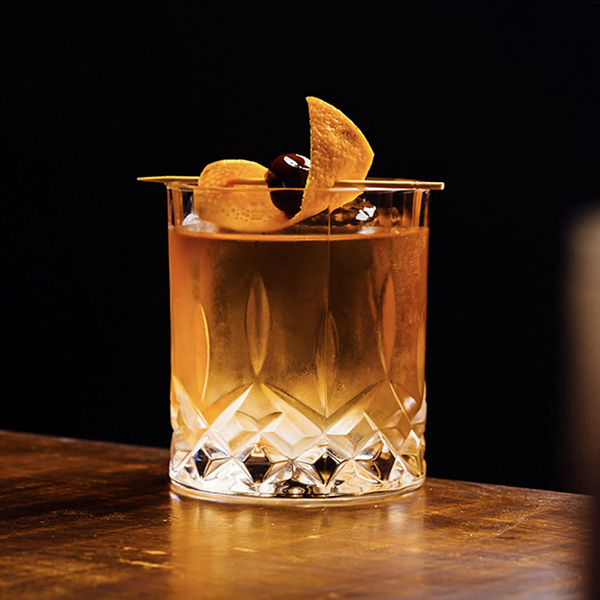- 7 Posts
- 25 Comments
 1·5 days ago
1·5 days agoI’ve not heard of Conker. I think it’s not in my area. Looks interesting though particularly because they have a decaf version. Although the color makes it look weak:
https://www.conkerspirit.co.uk/coffee-liqueur/
The cocktail on that website involves just adding water and shaking. I think I would sooner brew coffee and add gin, than to dilute the shot.

 1·8 days ago
1·8 days agoFor centuries, saffron has been a prized dye
Bizarre that such a costly substance would be used as a dye for clothing. Why pay what’s likely the equivalent of HP ink when you can just get a box of Rit yellow dye at the supermarket?
Surely the price will drop when someone figures out that drones can fly around and harvest the saffron.

 1·8 months ago
1·8 months agoThat would make sense. In Europe I got an IV just for blood samples. They could have been anticipating the possibility that I would need pain killers later, but seemed like it would have made more sense to use a normal needle and only do the IV if it came to the point of needing meds.

 1·8 months ago
1·8 months ago⚠ Folks-- use
lynxto view that article. It’s fully #enshitified in GUI browsers (autoplay, ½-screen blocking bullshit) but decent in text browsers.

 2·8 months ago
2·8 months agoIndeed… now that we can simply enter a couple ingredients into a search field and get countless recipes, and also w/Youtube, I would expect people to be better equipped in recent decades.

 11·8 months ago
11·8 months agoThe article covers that: “Of course no amount of cooking prowess will help if you can’t afford a basket of groceries.”

 1·8 months ago
1·8 months agoWeren’t bread machines all the rage because you just dump in the ingredients and it’s autopilot from there? I see a lot of them at 2nd markets and in dumpsters, so I wonder if their usefulness was overestimated.

 1·8 months ago
1·8 months ago… or farmers trying to sell obscure things like celery root!
seriously though, the article seems reasonable and balanced to me. E.g:
- “Of course no amount of cooking prowess will help if you can’t afford a basket of groceries”
- “It’s important to note, however, that cooking skills alone cannot solve the affordability problem”.

 1·8 months ago
1·8 months agoRight but what if the cheapest food is idk, something like celery root? I think the idea w/the thesis of the article is that a skilled cook can adapt to whatever ingredients are cheapest at any moment.
I think I’m a decent cook but I also think I need to improve because when I’m in the produce area and have no idea how to use like 15—20% of the options there. E.g. celery root, cactus, and ½ dozen things I don’t even recognize.

 11·8 months ago
11·8 months agoIf you read the whole thread, I would not have to spell this out. These are preservatives (source):
- honey
- salt
- garlic
- sugar
- ginger
- sage
- rosemary
- sage
- mustard
- mustard seed
- cumin
- black pepper
- turmeric
- cinnamon
- cardamom
- cloves
- vinegar
- citric acid
- lemon/lime juice
They generally work by killing/repelling/deterring microbes that to a notable extent happen to be of the unwanted variety. Before yesterday, I thought salt worked similarly to the others on that list. Yesterday I learnt that salt is uniquely functions as a preservative due to a different mechanism (a drying effect).
Your logic is nonsense. To claim that because substance X does not kill /everything/, it cannot serve as a preservative – this is broken logic that you brought to the thread. Nothing on that list of food preservatives kills or deters every microbe - not even every harmful microbe. Of course they selectively mitigate /some of/ “the bad bacteria” (but note it’s a bit straw mannish for you to use the article “the” in your phrasing imply /all/ unwanted microbes). Most preservatives mitigate enough unwanted microbes without unacceptable overkill to beneficial microbes to justify use as a preservative. They are selected as preservatives for this reason. Foods that fail to significantly select against unwanted microbes (i.e. most foods) don’t get tagged as a preservative. How are you not grasping this?
You also have noteworthy bad assumption: that evolution does not happen outside of the ocean. The claim that because life started in the ocean, the ocean is therefore suitable for everything – this is bogus. Try putting a freshwater fish in the ocean. If a complex organism can evolve to become intolerant to the environment of its ancestors, why wouldn’t microbes also evolve to develop intolerances?

 2·8 months ago
2·8 months agoIndeed, that’s a good point. I wonder how many people don’t know that. I used to think “nothing will survive 250°F in my pressure cooker” and was tempted to cook some questionable pork. But yeah, would have been dangerous because chemical toxins from bacteria output would “survive” (persist) in 250°F. So after some quick research, I tossed it.
Though I might be surprised if 24hrs is enough time for brine to not only accumulate bacteria in high numbers but also allow enough time for bacteria toxins to be produced. How fast does that happen? I would have thought a day is too short (I don’t think I ever let more than a day pass between boils).

 13·8 months ago
13·8 months agoActually that logic is broken IMO. A food preservative need not make life impossible for all organisms. E.g. hops (and consequential acidity) preserves beer to some extent by making life hard for some unwanted organisms. But hops do not kill everything (of course, because you intend to drink the beer). Beer can still spoil despite the hops.
But as I said in my correction, salt works as a preservative through a drying effect, which I did not previously realize (TIL).

 22·8 months ago
22·8 months agoI could always transfer it to glass or plastic to protect the pot but I guess laziness was the original motivator. Salt is cheap enough that I’ll probably just toss it going forward.

 3·8 months ago
3·8 months agoYeah, indeed I just realized from an article I linked that salt only works as a preservative by drying out food. So salt water is indeed useless.

 12·8 months ago
12·8 months agoi get 403 forbidden w/that link. And archive.org chokes on it too for some reason. Does your source counter this source?
(edit) ah, I see the problem. Salt only works as a preservative by drying out food.

 3·8 months ago
3·8 months agoWell it’s not actually clear to me whether the soft water is to protect the dishwasher, or to make cleaning more effective. Soft water dissolves soap better which makes it more effective in cleaning. It also means I can use powdered detergent (which is cheaper than liquid detergent, but in hard water powder doesn’t perform as well). Soft water has the down side that it’s actually /more prone/ to corrosion than hard water (at least according to youtube plumbers). So I’m tempted to conclude the built-in water softener is just for cleaning effectiveness.

 1·8 months ago
1·8 months agoAlso aren’t you afraid something will come to live in 2 days in warm salty water
Wasn’t salt the most popular preservative in the days before refrigeration existed? The stuff boils with heavy salt (like ocean water), so starts off semi-sterile due to the boiling. Then I don’t imagine many things looking for a home in brine, which then boils again the next day. This water is saltier than foods that rely on salt for preservation.

 24·8 months ago
24·8 months agoStarchy water sitting around is a breading ground for bacteria. Don’t do that.
That water is brine, if you do it right. Salt is a good preservative. I’ve tested it with up to 2 reuses.
Also, dishwashers don’t clean with salt water. They use the salt to reset their internal water softener.
Not sure why you thought I thought dishwashers clean with salt water. The manual’s advice was to mitigate salt grains that did not get into the salt reservoir that would sit on the stainless steel potentially for days.


That was my intuition but then consider this bug in
unpaper:https://github.com/unpaper/unpaper/issues/230
I have a script that runs unpaper on PGM files. When the DPI is 600, that bug in unpaper is triggered, but no problem if the source is 300dpi. So it means there is a difference. Although I suppose it’s possible that it’s not really DPI that causes unpaper to produce a truncated image; it could come down to sheer number of pixels. Guess I could work that out by testing further with smaller source scans.
The reason for my question is that I’d like to write my script to work around that bug. If a source file has more than 300 dpi, I would use ImageMagick instead of unpaper to do the bileveling.
(update)
I cropped a 600dpi image in half using GIMP. Then fed that into
unpaper. The bug was not triggered and the full canvas was processed correctly. So I think you are right… DPI is not a concept on PGM files. Which implies unpaper’s bug is simply a limitation on the number of pixels it can handle. It’s apparently incidental that scanning a full size page at 600 dpi results in more pixels than unpaper can handle.